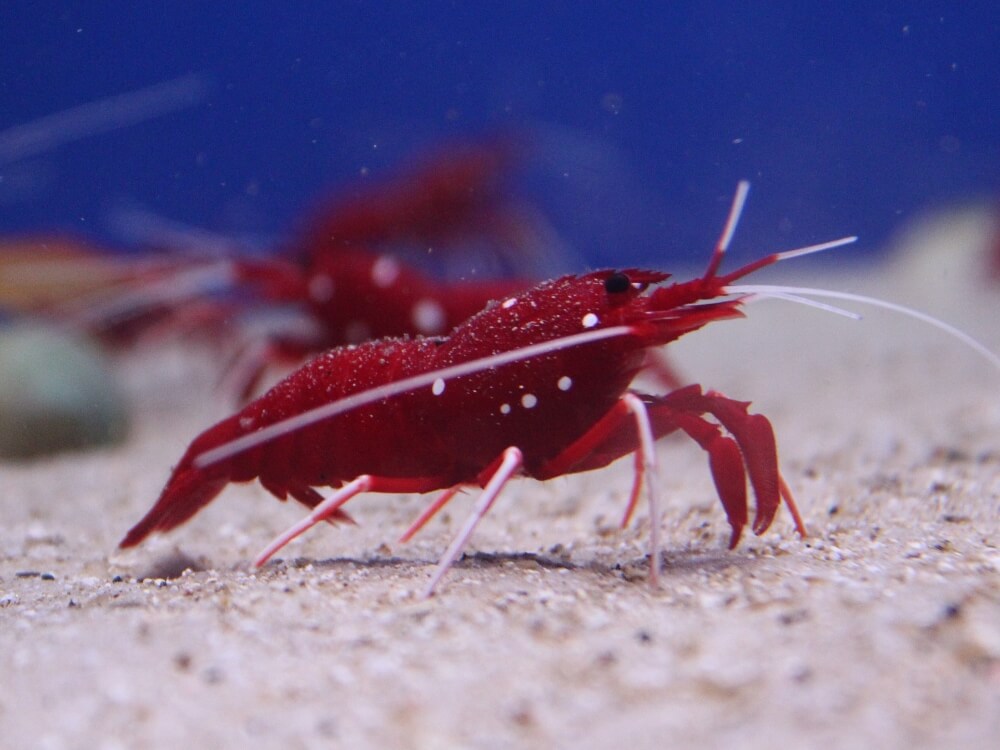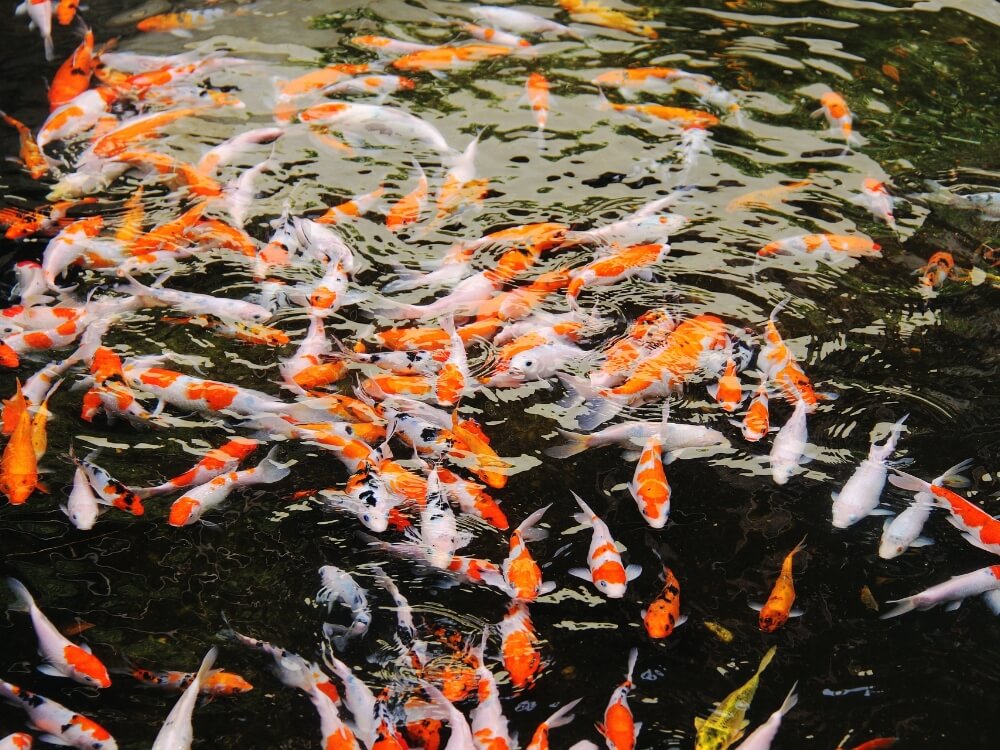Aquaculture
Aquaculture. Compare water filtration systems between the AFM® filter tanks and the original filtering system. For ornamental fish ponds and aquaculture. It will help to solve common problems in fish, shrimp, aquatic animals such as green, turbid water with lots of moss. Therefore, the pond must be cleaned or wastewater treatment regularly.

Problems of ornamental fish ponds and aquaculture
Aquaculture such as fish ponds, shrimp, and aquatic animals often face the problem of turbid water with a lot of moss. The pond must be cleaned and wastewater treatment regularly, which the problem comes from fish waste, food waste for fish including bacteria and organic phosphate in the pond that cannot be filtered and removed from the ponds
Problems with parasitic parasites in fish ponds or aquatic animals ponds cause having parasitic disease.
Why is the water filtration system (Media Filtration) not very popular with ornamental fish ponds and aquaculture?


Common water filters which are available in the market when used for a while will not be able to filter or wastewater treatment form bacteria and is turned out to becomes a breeding ground for bacteria as well.


.


common water filters can filter up to only 20 microns, while bacteria are sized from 0.2 – 5 microns (0.0002 – 0.005 millimeters) cannot filter helminth eggs, protozoa and parasites that are 3-5 microns in size.
Comparison table for multi ponds filtration system with AFM® filter
| AFM® media filtration | Multi-ponds water filtration system | |
|---|---|---|
| Size of the treatment pond | Use the area according to the size of the filter tank and the filtration rate, if it is a 20 cubic meter pond, the installation area is approximately 0.5 – 1.0 square meters (4 m3/Hr.)  |
Use at least 1/2 times the area of a fish pond. Pond size 5m x 1m. Use a treatment pond area of 2.5 square meters. |
| Filter rate |
|
It depends on the size and number of ponds |
| The filter system consists of | Suction pump, size 1.5″ – 2″ at least 1, fiberglass filter tank with multi-port valves for cleaning the filter at least 1 tank |
|
| Preservation | Clean the filter (Backwash) every 3 days, take 5-10 minutes, the owner can look after by himself. free of charge and no cost of other related products required | The treatment pond must be cleaned at least once every 1-2 months. The cost is …..baht/time. The water must be changed every month at least. |
| Treatment efficacy and filter the waste water |
|
|
| Lifetime service | 15 years and no need to change the filter |

AFM® is suitable for aquaculture
Aquaculture pond microorganisms are Microorganisms for treating wastewater treatment, fish ponds, shrimp ponds and various aquatic animals. that were selected to solve the problem of water in rotten fish ponds, smelly fish ponds, and waste water in various breeding ponds. and stop the death of aquatic animals caused by wastewater treatment especially
AFM® is suitable for all stages of aquaculture. from preparing the pond and while raising, Helps control pathogens in the pond. Create plankton and benthos. microorganisms in fish ponds
AFM® can reduce DOC (Dissolved Organic Carbon)
or dissolved organic carbon by eliminating organic matter in water (A Negative Zeta potential of AFM® adsorbs small particles and dissolved organic molecules from water), but using sand will create organic matter, resulting in higher DOC values, when DOC decreases, TOC (Total Organic Carbon – Total Organic Carbon in the water) will be reduced. Organic carbon in the water is food for bacteria, when bacteria are abundant, the demand for oxygen in the water increases. The excretion of bacteria will cause a lot of carbon dioxide in the water and importantly, organic carbon is also food for Vibrio Sp., which causes all shrimp diseases.
More information
Bacteria that are organic substances in water need oxygen (Aerobic bacteria) to decompose inorganic substances. The oxygen demand of these bacteria decreases thus dissolved oxygen content in the water. Therefore, clean water has a high DO value (Dissolved Oxygen) and waste water has a low DO value.
BOD (Biochemical Oxygen Demand) is the amount of oxygen that microorganisms use to break down organic matter in water
- Water with a BOD greater than 100mg/l is dirty water and if the water has a BOD < 100 mg/l it is good quality.
- Water with a high BOD indicates a high content of organic matter. Microorganisms need O2 to break down those organic compounds.
- Water with a low BOD indicates low organic content. Microorganisms need O2 to break down those organic compounds.

AFM® can reduce DOC (Dissolved Organic Carbon)
or dissolved organic carbon by eliminating organic matter in water (A Negative Zeta potential of AFM® adsorbs small particles and dissolved organic molecules from water), but using sand will create organic matter, resulting in higher DOC values, when DOC decreases, TOC (Total Organic Carbon – Total Organic Carbon in the water) will be reduced. Organic carbon in the water is food for bacteria, when bacteria are abundant, the demand for oxygen in the water increases. The excretion of bacteria will cause a lot of carbon dioxide in the water and importantly, organic carbon is also food for Vibrio Sp., which causes all shrimp diseases.
More information
Bacteria that are organic substances in water need oxygen (Aerobic bacteria) to decompose inorganic substances. The oxygen demand of these bacteria decreases thus dissolved oxygen content in the water. Therefore, clean water has a high DO value (Dissolved Oxygen) and waste water has a low DO value.
BOD (Biochemical Oxygen Demand) is the amount of oxygen that microorganisms use to break down organic matter in water
- Water with a BOD greater than 100mg/l is dirty water and if the water has a BOD < 100 mg/l it is good quality.
- Water with a high BOD indicates a high content of organic matter. Microorganisms need O2 to break down those organic compounds.
- Water with a low BOD indicates low organic content. Microorganisms need O2 to break down those organic compounds.

AFM® and ACO® can help remove nitrogen from fish or aquaculture ponds
AFM® filters out organic matter and filters out bacteria, while ACO® is an oxidizing solution by using UV energy from sunlight to stimulate the generation of free radicals (Hydroxyl Radical) to increase the Redox value in the water as well as ozone. However, it is more effective than ozone, it can oxidize water contaminants such as urea, pesticides. When it reacts with organic matter (Organics) in water, it will break down into Carbon Dioxide (CO2), Water (H2O) and Nitrogen (N2)
More information
Oxidation potential (eV), Oxidation Potential
- Fluorine (F) 2.87
- Hydroxyl Radical (OH) 2.86
- Oxygen atom (O) 2.42
- Ozone (O3) 2.07
- Hydrogen peroxide (H2O2) 1.78
- Chlorine (Cl) 1.36
- Oxygen molecule (O2) 1.23
Nitrogen is an essential trace element for plants. Which is in the form of ammonia-nitrogen nitrate, if the water contains a high nitrogen content, the growth of aquatic plants is rapid. Plants can synthesize nitrogen-containing organic matter. Animals, when eating plants, excrete nitrogen in organic form Microorganisms convert nitrogen into inorganic substances, such as ammonia, we call this cycle:
Ammonification, partly ammonia is oxidized by Nitrosomonas and Nitrobacter bacteria to Nitrite and Nitrate, respectively. Depending on air conditions, free radicals prevent biofilm formation caused by the oxidation of dissolved organic matter, heavy metals and semi-metals. dissolved oxygen in water must have more than 2 mg/l is required for the reaction process.
